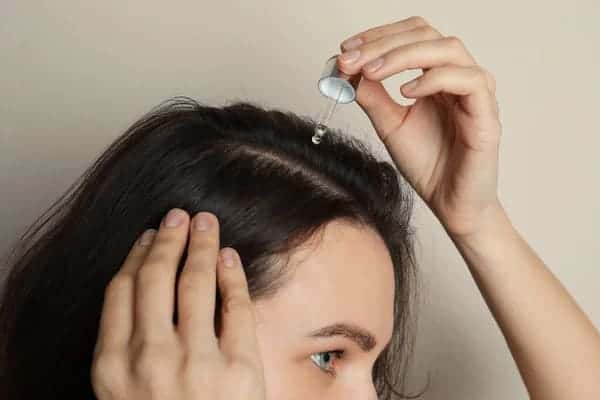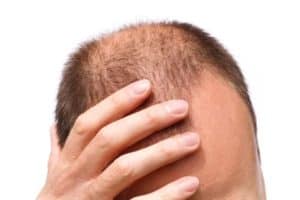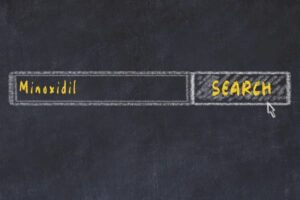Does It Really Cause New Hair Growth?
Do you want to fight hair loss? Hair loss is a problem that affects men and women. By the age of 35, over 2/3 of men will suffer with signs of hair loss and hair thinning. One of the newest treatments being used to combat hair loss is Azelaic acid. It’s used to treat a range of conditions like male pattern hair loss (androgenetic alopecia) and alopecia areata. If you’re interested in finding out how this hair loss treatment works, if effectivity, and more, then read this article below.
What is Hair Loss and Azelaic Acid?
So, how is it that Azelaic Acid, Hair Loss, and Hair Growth can all be related? Well, hair loss is a problem that is estimated to affect over 80 million Americans. In an attempt to combat this, many people look for treatments to promote new hair growth. One such treatment is called Azelaic Acid.
Azalaic Acid looks to promote hair growth by stopping hair loss at its source: our hormonal makeup. In theory, if a person can stop their body from producing the chemicals that cause hair loss, then they’ll be able to continue growing a healthy head of hair into their mature years.
What is Hair Loss and Why Does It Occur?
Hair loss is a natural process that occurs on our bodies every single day. At any one time, the average adult has roughly 150,000 hairs on our body. The NHS estimates that we. naturally lose between 50-100 hairs every single day without noticing.

Typically, hair los starts to become a problem when we start to lose hair follicles at a faster rate than they can grow, resulting in the appearance of thinning hair, receding hairlines, and bald patches.
If a person begins to suffer with hair loss, this mean their hair growth cycle has been altered from its natural state. The growth period (anagen phase) of a hair follicle is reduced, the shedding stage (catagen phase) continues, and the resting time (telogen phase) increases.
There are many different reasons why men and women suffer with hair loss. In men, this is predominantly down to a genetic condition called male pattern baldness. Although female pattern hair loss is also prevalent, women seem to be affected more severely by environmental causes such as: stress, depression, and harmful styling practices.
Other common causes of environmental hair loss include:
- Stressful Lifestyles
- SSRI related hair loss
- Chemotherapy
To combat hair loss, there are a range of solutions, with differing success rates. Whilst many sufferers have tried over-the-counter chemical treatments (like Minoxidil and Finasteride), most look for a hair transplant to fix their stimulate new hair growth.
What is Azelaic Acid?
Put simply, Azelaic acid is an organic compound that is naturally occurring. You can find Azelaic acid on skin, certain grains, barley, rye, and even some animal products. It’s part of the dicarboxcylic acid family. Other dicarboxcylic acids are used as food additives, the making of pharmaceuticals, and adhesives (such as glue).

Azelaic Acid is known amongst chemists for decreasing unwanted protein synthesis and controlling sebaceous gland activity (in other words, sweating). As well as being a hair loss treatment, many skin creams and acne medications use Azelaic Acid. This is because it works effectively as an anti-oxidant, pore-unblocker, antibacterial cream, and anti-inflammatory.
All of these properties are perfect for a hair loss medication, alongside its ability to block the production of Dihydrotestosterone (DHT); the chemical responsible for hair loss. But more on that next…
Azelaic Acid’s role as an inhibitor of 5-alpha reductase activity
Dihydrotestosterone (DHT) is a male sex hormone that is five times more powerful than testosterone itself. As well as being the hormone that gives us thick body hair, lean muscle, and broad shoulders, it does also make us go bald.
Testosterone is converted into DHT using an enzyme called 5-alpha reductase. Once DHT is formed, it can bind to your hair follicles, increasing its resting (telogen) phase. This process is called Telogen Effluvium.
Azelaic acid is a powerful DHT blocker, helping to slow the effects of telogen effluvium and pattern baldness. Several studies have suggested Azelaic Acid to be effective at helping promote new hair growth. It also has a high bioavailability and superior toxicological profile in comparison to other treatments on the market. This means it’s safe to use for most people and, statistically speaking, less likely to provoke an immune response.
By inhibiting the production of DHT, the elongation of your hair follicle’s resting phase is preventing, enabling your hair to keep on growing naturally. As well as this, it’s function as an anti-inflammatory and anti-oxidant is perfect for treating the scalp and preventing any fungal or bacterial infections.
How to Take Azelaic Acid for Hair Loss and Hair Regrowth
Azelaic Acid is freely available over the counter of most pharmacies and health shops on the high street. Equally, in this Post-Covid world, many companies also offer subscription services that will delver Azelaic Acid to your door without the awkward exchange over the counter!
Azelaic Acid comes as a topical solution, meaning you can add a few drops onto your scalp once or twice a day. From here, massage it in and let it work its magic!
This hair growth treatment also comes in a number of different concentrations. The most popular concentrations seem to be 5%, 10%, 15%, and 20%.
In other words, concentration means the strength of the solution you’re applying. In most cases, it’s generally safest to begin with a smaller concentration and work your strength up over time.
If you’re applying Azelaic acid, then you’re probably not going to want to apply this with any other topical solutions, like Minoxidil. Instead, you may want to trial this with an oral treatment like finasteride.
Human skin is quite delicate and applying too many chemicals can cause irritation and inflammation.
Does Azelaic Acid Work as a hair loss treatment?
Clinical studies have shown Azelaic acid to be effective at reducing signs of hair loss and hair thinning. This treatment boasts a similar efficacy as another chemical treatment called Finasteride. Both of these treatments are 5-alpha reductase inhibitors, so it’s quite unsurprising that they are similarly effective at treating hair loss.

Results are promising for almost all hair loss conditions, specifically that of androgenetic alopecia and alopecia areata. If you’re looking to fight hair loss, then Azelaic Acid is definitely a great place to start.
Azelaic Acid is going to most effective as a “preventative” treatment, used early on, to “manage” your symptoms of hair loss. The quicker you act with a product like Azelaic Acid, the more effective it is going to be. The more hair follicles you have, the more you can save.
If you’re aged between 18-30 and think you may be suffering with early onset hair loss, then this treatment is going to be perfect. Of course, the older you get (and the more baldness you begin to incur) this hair loss treatment is going to be less and less effective.
Azelaic Acid and Alopecia Areata
Alezeleic Acid’s efficacy at treating hair loss also extends to patients with alopecia areata! Alopecia Areata is an auto-immune condition that causes spot baldness.
Azelaic Acid has also been shown to be effective in treating patients with Alopecia areata. In one clinical study (Sasmaz 2005), Azelaic Acid showed similar results to Anthralin (another medication) in hair regrowth. Thus, it can also be used for patients suffering with alopecia areata.
In a more recent study, results from Salih & Qurtas‘ (2022) showed 20% concentration Azelaic Acid was also effective at reducing cases of localised alopecia areata.
So, Azelaic Acid does also seem to be effective treatment for managing symptoms of localised alopecia areata. Alongside this, its anti-inflammatory properties will also help in minimising the effects of your autoimmune condition and soothe your scalp.
What Kind of Hair Regrowth Can I Expect With Azelaic Acid?
As with other chemical treatments, Azelaic Acid is a fantastic measure you can take to “manage” or “slow” your symptoms of androgenetic alopecia hair loss.
In places where you’re still able to grow hair, Azelaic Acid is going to be effective at enabling your hair to grow. It is likely to look thicker and fuller in these areas.
However, in cases of male androgenetic alopecia, your hair is not going to regrow in place that you’re already bald. Unfortunately, your receding hairline is not going to grow back.
The only way to restore a receding hairline is by hair transplant. This is the only treatment that boasts a long-lasting, natural looking result.
Side Effects of Azelaic acid as a Hair Loss Treatment
As with any medical treatment, Azelaic Acid does have some reported side effects. If you experience any of the following symptoms, then you may be having a reaction:
- inflammation, or burning sensation, on the skin
- peeling skin on the scalp
- dry, or red, skin
- irritation or itchy scalp
- In rare cases, hives.
Generally, the stronger concentration you use, the more likely you are to suffer with side effects. so, if you’re suffering with any of the symptoms above, then lower your dosage. if symptoms persist, then maybe try another treatment!
Conclusion
Azelaic Acid does seem to be an effective treatment at slowing the rate at which someone may be suffering with hair loss. What’s even better is that this treatment appears to work in several different cases, like: male pattern baldness, female pattern hair loss, and/or even patchy alopecia areata.
Although Azelaic acid is not going to help you grow hair in areas that are currently bald, it’s ability to elongate the (growth) anagen phase of your hair follicles makes it perfect for areas that are beginning to thin.








